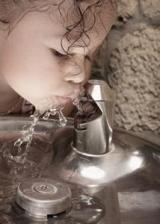Support to States
EPA researchers provide technical and scientific support as needed to EPA’s On-Scene-Coordinators and state environmental agencies in times of crisis. Whether it’s selecting the appropriate analytical method or the right technology to decontaminate a water system, EPA’s researchers are able to assist as needed.
Read more about our expertise and support:
Partner: Flint, Michigan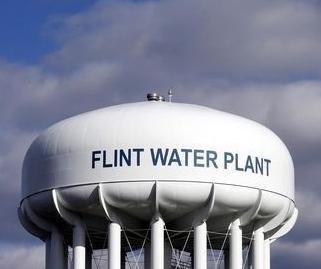
Challenge: Lead contamination in Flint, MI water system
Resource: Technical support, computer modeling and sampling equipment
In EPA, reachback is a process for obtaining services and technical support from parts of the Agency that are not involved in the on-site emergency response activities. It extends the capabilities of the on-site staff and is scalable to suit the demands of the response. EPA’s Office of Research and Development’s (ORD) created the Reachback for Emergency Response (RACER) effort to provide ready access to all of ORD’s technical resources during an environmental incident. RACER was used to coordinate some of the technical support needs identified by the Agency’s responders during the response to the Flint drinking water crisis.
ORD is also participating on the EPA Region 5 Flint Safe Drinking Water Task Force that was established in the fall of 2015. The Task Force continues to provide technical assistance to the City of Flint as it works to rectify the problems that were created when the City changed its water supply from the City of Detroit (Lake Huron) to the Flint River. The City reconnected to the City of Detroit supply in October 2015 and is anticipating connecting to the supply provided by the Karegnondi Water Authority in the future.
Partner: State of Montana
Challenge: Asbestos exposure following forest fires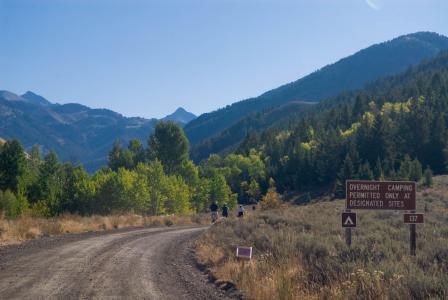
Resource: Computer modeling
EPA Region 8, working with the United States Forest Service and the Montana Department of Environmental Quality (DEQ) sought technical support from EPA’s Homeland Security Research Program (HSRP) in assessing health risks associated with potential forest fires near the Libby asbestos site in Montana. The effort will use previously acquired data to model fate and transport of asbestos fibers that could become air born from fire in the contaminated forest surrounding the Libby, MT. Superfund site. The particulate matter, ash measurements and estimated emissions from the HSRP study will be used to assess resuspension, dispersion, and deposition. The modeling results will also be used to determine exposure potential and health risks to firefighters and the surrounding communities.
Data suggested that only a small fraction of the asbestos in the forest floor material was released into the gas phase as a result of the simulated forest fires of the experiments. Region 8 did subsequent modeling, using HSRP initial conditions and asbestos partitioning data, along with direct measurements of asbestos in the forest floor, to estimate potential exposures of Libby residents from a wildfire in the vicinity of the vermiculite mine. In the words of Deb McKean from Region 8 “Our estimates used in the smoke model assumed a series of larger fires in heavily contaminated areas. We could not demonstrate significant asbestos impacts to Libby. Although USFS believes that hot fires have the potential to raise contaminated ash to higher elevations and subsequent transport, there do not seem to be any models to demonstrate it.”
Partners: Tulane University, State of Louisiana
Challenge: Burkholderia pseudomallei outbreak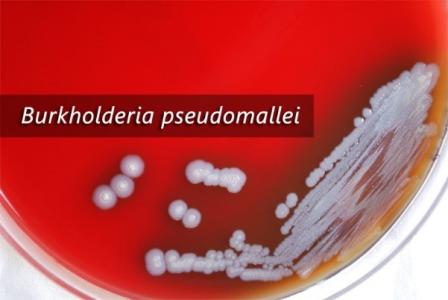
Resources: Sampling support
In March of 2015, the deadly bacteria, Burkholderia pseudomallei, causative agent for the disease melioidosis, was released from a high-security laboratory at Tulane University’s Primate Research Center. Burkholderia pseudomallei is capable of thriving in soil and water. Primates that were exposed to the bacteria were housed in outdoor cages with gravel bottoms. There is no standard protocol for sampling and analyzing gravel for Burkholderia. HSRP was contacted to provide technical support to the state and EPA region on sampling and analysis and proper management of potentially contaminated wastewater.
Partners: State of Texas, City of Corpus Christi
Challenge: Indulin AA-86 contamination in Corpus Christie’s water supply
Resources: Determine health risks and action level
ORD researchers responded to a request for assistance from Region 6 in Texas after an asphalt emulsifying agent, Indulin AA-86, contaminated Corpus Christie’s water supply. It was thorough work in support of an immediate need and for a chemical that most were unfamiliar with. ORD (HSRP) provided assistance early in the response concerning decontamination approaches that might be suitable for use in purging the system of the contaminant. ORD scientists also helped the region dissect and understand the toxicity and possible risks associated with ingestion of water contaminated with Indulin AA-86 and the water soluble salt from the product. The researchers established a health-based action level for the contaminant and supported an immediate need by the region, the state, and the city to protect public health..
Partners: Ohio, Michigan, Colorado, Kentucky, New York, Florida
Challenge: Real Time analysis of conditions in water distribution system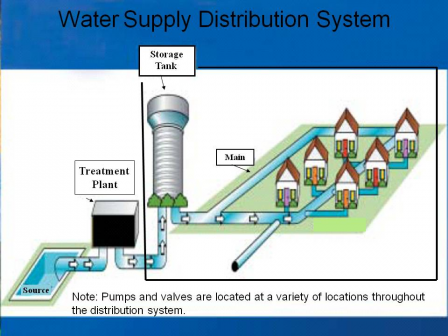
Resources: Computer Tools
EPANET-RTX is a computer tool for water distribution systems that provides the means by which operational data can be connected with a network infrastructure model, and the resulting network simulation model can be calibrated, verified and continually tested for accuracy using operational SCADA data. Until now water utility engineers have been unable to efficiently test and continuously demonstrate that their water distribution system network model accurately represents system behavior.
RTX:LINK is an EPANET-RTX-based software tool developed for drinking water utilities, small and large, to harness supervisory control and data acquisition (SCADA) data and the power of real-time analytics. RTX:LINK provides a web browser view - via smart phone, tablet or computer - of all available utility SCADA data through a cloud analytics service to allow the water utility to remotely access and analyze their SCADA data in real-time.
The current list of utilities using or investigating EPANET-RTX include: Greater Cincinnati Water Works, Denver Water, Northern Kentucky Water District, Hillsborough County Water District (near Tampa, FL), City of Milford, OH, Louisville Water (KY), American Water (KY American – Lexington), and Onondaga Metropolitan Water Board (NY), and City of Flint, MI.
With “RTX:Link,” our hope is to greatly expand the universe of water utilities using EPANET-RTX for real-time analytics.
Partners: Ohio, Navaho Nation, Canada, United Kingdom, New York
Challenge Cleaning up after a wide area radiologic incident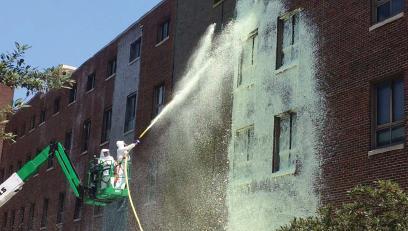
Resources: Full scale demonstration of technologies
The US EPA and DHS Wide Area Urban Radiological Containment, Mitigation, and Clean up Technology Demonstration was held at Battelle in Columbus, Ohio, June 22‐25, 2016. This highly successful event provided responders options for response to a wide area radiological incident, such as a dirty bomb explosion or a nuclear accident, by showing the responders the operation feasibility of the tools in real time while the end users deployed the technologies. While no live rad agents were employed in this demo, critical operational insight was gained by the response community. This event continues the applied rad cleanup research conducted by NHSRC at bench and pilot scales over the last several years. In attendance were senior officials from the Department of Homeland Security, Ohio EPA, Columbus, OH City Council, Battelle Memorial Institute, first responders from the U.S. and Canada, EPA responders, technology vendors, representatives from FEMA, New York City, the Navajo Nation, the United Kingdom, ORD‐NHSRC and many others.
Watch this video entitled Toolbox of Technologies Exit, to learn more.
Partners: California, New York, Virginia, Massachusetts, District of Columbia
Challenge: Cleanup of an anthrax contaminated subway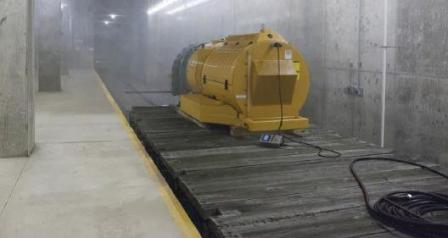
Resources: Full scale demonstration of technologies
Following the 2001 anthrax attacks, cleanup of the Hart Senate Office Building and Brentwood postal facility cost in excess of $1 billion, and resulted in the Brentwood postal facility being closed for over two years. Since that time, U.S. EPA has done a great deal of work to improve the nation’s ability to cleanup buildings contaminated with anthrax or other biological agents. In recognition of the complexities that would be involved, and the number of cities that have underground rail system, EPA along with Department of Homeland Security, Department of Defense and several national laboratories turned their attention to the cleanup of subway systems contaminated with anthrax.
The Underground Transportation Restoration (UTR) Operational Technology Demonstration (OTD) was conducted at Fort A.P. Hill’s Asymmetric Warfare Training Center (AWTC) to evaluate decontamination technologies that could be used in the event of an anthrax incident in a subway system. The project used a non-pathogenic surrogate that behaves much like anthrax spores in terms of how it is transported in the air, settles and how it can be killed.
The project consisted of two rounds of rounds of background sampling, agent release, decontamination, sampling, waste removal and decontamination, and post-decontamination sampling. The technologies that were evaluated included a fogger that produced a fog from diluted bleach and skid mounted sprayer that sprayed a liquid pH adjusted bleach solution. Both technologies were selected because they are off-the-shelf and could easily be purchased in an emergency.
Thousands of post decontamination samples were collected and are currently being analyzed. The success of the decontamination efforts will not be known until the samples are processed and results available and studied, but the demonstration was helpful in defining the many challenges that could be faced during a real incident including sealing portions of a subway tunnel, sampling unique surfaces such as railway ballast, and managing wastes that cannot be decontaminated in situ.
Watch this video on the Underground Transportation Restoration Project, Exitto learn more.
Partners: City of San Francisco, California
Challenge: Testing the Decontamination of a Bay Area Rapid Transit (BART) railcar contaminated with a non-pathogenic anthrax surrogate
Resources: Advisement and Field Support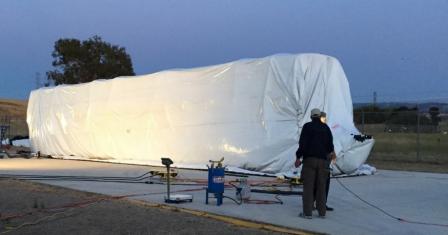
As part of the Department of Homeland Security’s (DHS) Underground Transport Restoration (UTR) project, several federal agencies conducted a scientific study to evaluate methyl bromide (MB) as a fumigant for decontaminating subway railcars contaminated with Bacillus anthracis (Ba) using Ba Sterne strain spores. In conjunction with the DHS, the United States Environmental Protection Agency (EPA), Sandia National Laboratories (Sandia), and Lawrence Livermore National Laboratory (LLNL) participated in the fumigation of a subway railcar using MB in July 2015. The study was conducted to gain large-scale information on the use of MB for the decontamination of Ba spores and to develop site-specific plans and guidance that could be modified and used during a real-world incident. The fumigant MB was selected because it has shown to be effective in the inactivation of Ba spores during laboratory testing, is less corrosive than most other fumigants, and can be captured on activated carbon.
At the conclusion of the 36-hour fumigation period, the railcar was aerated and samples were collected and sent for analysis. Results showed that none of the 40 fiberglass or 40 aluminum test samples contained viable spores after fumigation. Out of the 40 samples of each of the following materials analyzed, the following numbers of samples were positive after fumigation: 2 nylon carpet samples, 1 rubber flooring sample, 1 Mylar® sample, and 8 vinyl seating samples. Samples removed from the fumigation envelope at 6, 12, 18, and 24 hours after the start of fumigation contained viable spores on some of the samples from all materials.
Given these results, EPA recommends a Bacillus anthracis contaminated rail car be fumigated with methyl bromide for a full 48 hour to ensure complete inactivation of the bacteria.
Partners: New York, Maryland, Texas
Challenge: Ebola cases in the U.S.
Resources: Advisement on decontamination and waste management
ORD supported states and regions respond to the 2014 outbreak of Ebola in the United States. ORD researchers were able to provide technical support related to decontamination products and best ways to use them, recommending the best decontamination methods for Person Protective Equipment which was important to health care workers and others who came into contact with Ebola patients, how was waste should be managed, and the fate of the virus in wastewater. ORD contributed to the National Security Council’s development of the Multi-agency Interim Guidance on Management of Wastes containing Category A Infectious Agents.

